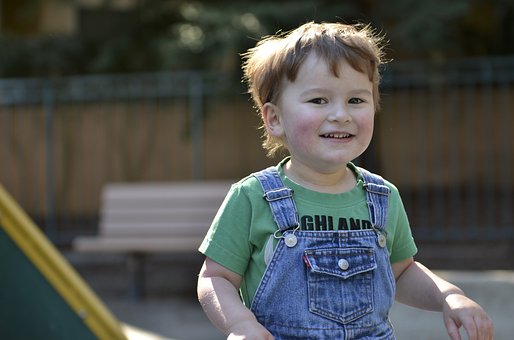by John Jones, JD, PhD, The Tenpenny Report:

In January 2023, the CDC presented its 2018 survey of autism among eight-year-old American children. The most recent numbers show 1 in 54 kids have autism, nearly triple from 2002, when the number was 1 in 160. Amongst the autistic, the authors held that while the numbers of low functioning had doubled, the proportion in the average and above average IQ is five times greater than in 2002.
But do not be fooled. They grouped the IQ ranges of the children into three categories:
TRUTH LIVES on at https://sgtreport.tv/
- Extremely Low IQ (below 70): 35.2%
- Low IQ (between 71-85): 23.1%
- Average and Above Average IQ (above 85): 41.7%.
(Note: Average IQ in the general population is 100. Ivy League undergraduates are around 120. At best, only 12% of children with autism have an IQ above 100.)
Appreciate, autism is not just another label for special needs, even though about 2/3rds of all intellectually impaired American children are diagnosed with autism. According to the Department of Education, in 2010, about 370,000 American children (ages 6-21), receiving services in special education, were autistic. By 2021, that number grew to over 860,000 – while an additional 430,000 non-autistic children were diagnosed with an intellectual disability.
This Rising Tide Might Drown Us All
Mainstream science expects autism numbers to rise. Since WWII, data on children with autism is well-documented. Lotter (1966) examined eight-to ten-year-olds in Middlesex, UK, and estimated 4.5 per 10,000 children. Contemporary American estimates of the early 1970s were slightly lower at 2 per 10,000 (see Weintraub 2011). When Newschaffer et al. (1992) looked, it jumped to 19 per 10,000 in six-year-olds. Writing in Nature, Weintraub (2011) said that the autism rate in the United States, for 2009, was 1 per 110 (about 90 per 10,000).
(Arguably the U.S. does not lead the world. As of 2011, South Korea saw 1 in 38 children diagnosed with autism).
What could be the cause? Ask Jon Poling, MD
In the year 2000, a father (medical doctor/neurologist) and mother (a registered nurse and lawyer), presented their daughter to a pediatrician. The 19-month-old girl was injected with 5 shots called:
diphtheria, tetanus, and pertussis (DTaP); Haemophilus influenzae B (Hib); measles, mumps, and rubella (MMR); polio (IPV); and varicella (Varivax).
Within 48 hours, the child was screaming and crying inconsolably. She could not walk (but was not diagnosed with poliomyelitis). Over the next three months, she developed a measles-like rash (but was not diagnosed with measles or rubella). Her pediatrician called it, vaccine-induced varicella (Offit 2008).
For three months, the child had spasms (opisthotonus – not diagnosed as tetanus); and her family saw autistic behaviors including: spinning and gaze avoidance. The girl was diagnosed with autism. Six years after her vaccine injury, Poling et al. (2006) said this about Hannah: she would regain some speech; and by age six, “she attended kindergarten, with an aide.”
For parents Jon and Terry Poling, there was just one legal question: did those vaccines cause Hannah to suffer regressive encephalopathy?
The Legal Definition of Autism
One expert witness for the Vaccine Court was Andrew Zimmerman. He had testified, numerous times, that vaccines did not cause autism. But Zimmerman knew Hannah Poling and worked with her father. In November 2007, Zimmerman informed lawyers for Poling that due to her underlying mitochondrial dysfunction, vaccines had caused her regressive encephalopathy.
In 2008, the special master in the Vaccine Court agreed, and Poling was awarded compensation for vaccine injury. Unfortunately, a few months later, over 5,000 other families, claiming that vaccines caused autism in their children saw their claims denied.
Encephalopathy and Encephalitis and Vaccines
Before it was deleted from YouTube, I saw a presentation by Dr. Kenneth Stoller. (See it here). Stoller explains: autism is encephalopathy; that is, ‘children, with brain damage, from a toxicological burden, often caused by vaccines, have autism.’
It is long-known that encephalitis follows vaccination. In the late 1800s, medical reports found encephalitis caused by smallpox vaccine as well as rabies vaccine (Permezel et al. 2022). By the end of the 1920s, medical professors, and government reports documented encephalitis post vaccination. This evidence moved the Netherlands to repeal mandatory vaccination laws. See Wellcome Collection, Minority Report of the Royal Commission on Vaccination.
As recently as 2008, an Australian team reviewed case-reports, from 1976 to 2007, and found associations between acute disseminated encephalomyelitis (ADEM) (also diagnosed as multiple sclerosis) and vaccinations for rabies; diphtheria–tetanus–polio (DTP); smallpox; measles, mumps, rubella; pertussis (whooping cough); influenza; hepatitis B; and more.
Read More @ TheTenpennyReport.com




